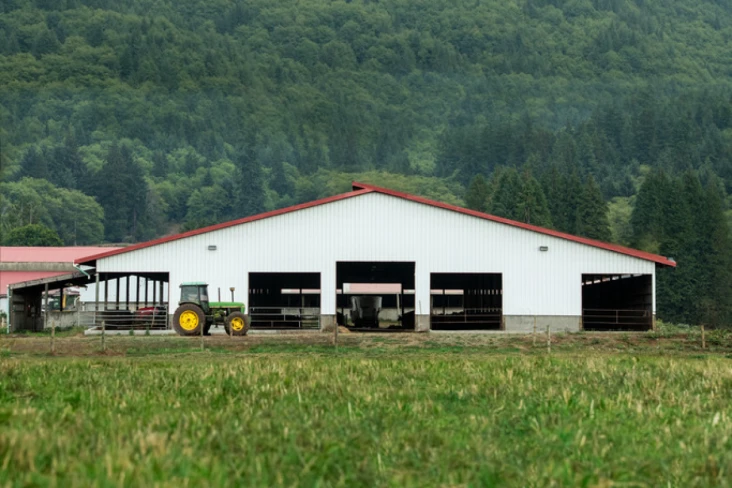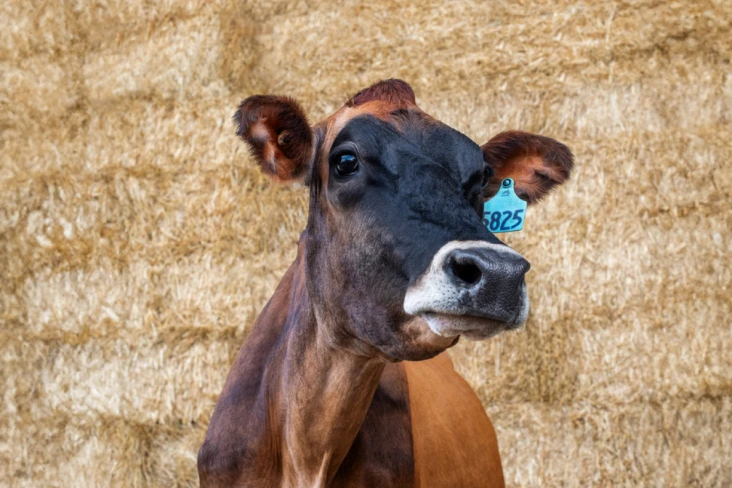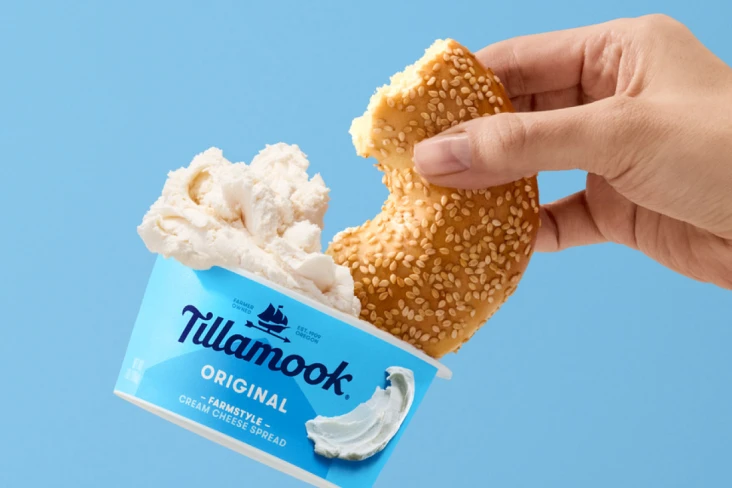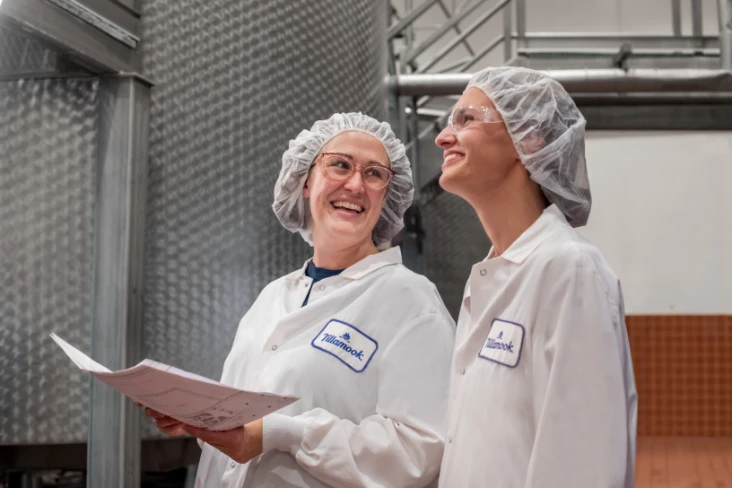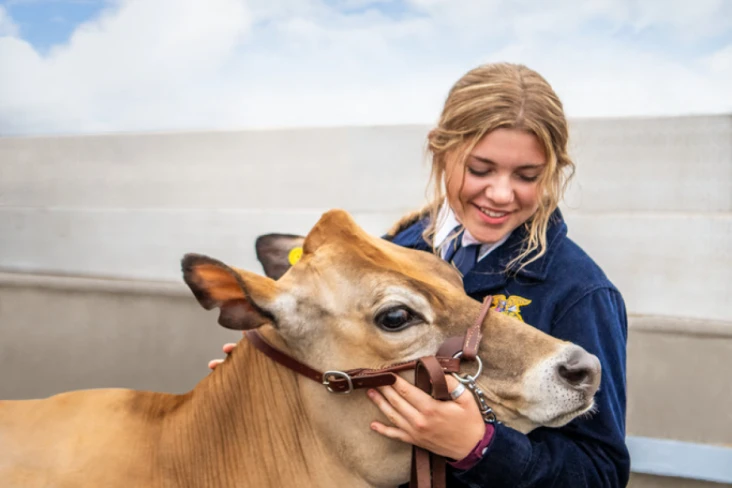2022 GLOBAL REPORTING INITIATIVE ISSUE BRIEF
At Tillamook County Creamery Association (TCCA), we uphold our tradition of doing things right by committing to a business model rooted in stewardship. Packaging plays an important role at TCCA in protecting the quality and nutritional benefits of our products, and allowing them to be stored, transported and eaten safely. Since nearly 40% of the world food supply becomes waste, packaging technology plays a significant role in preventing food waste by maximizing the shelf life of products. However, packaging itself also faces environmental challenges. It uses valuable resources in its production and generates waste, particularly when it is not recycled or repurposed. In fact, packaging accounts for as much as one-third of the non-industrial solid waste stream in developed countries. To address this challenge, we are committed to minimizing the environmental impact of packaging, without compromising its function, product safety or quality standards.
One of our Stewardship Charter commitments is Inspired Consumers. As vital stakeholders, our consumers are increasingly interested in the environmental impact of products, including packaging. At the same time, they expect our premium dairy products to be delicious, high quality and safe with a long shelf life — all factors that depend on excellent packaging. We have a Packaging Policy that defines sustainable packaging and outlines guidance criteria for all our product lines, and across primary, secondary and tertiary packaging types. Our Sustainable Packaging Program guides efforts across TCCA to assess and improve the environmental impact of our packaging.
Key Players:TCCA’s Research and Development (R&D) team has packaging engineers that research, design and source innovative packagingfor our perishable dairy products. This is done without compromising the function, safety, quality and consumer perception of Tillamook products. Our Environment & Community Impact (E&CI) team supports sustainable packaging efforts by leading the cross-functional Sustainable Packaging Program. These teams develop and implement policies; lead life-cycle assessment (LCA) projects to quantify packaging impact; and participate in industry organizations such as the Sustainable Packaging Coalition (SPC) and the Innovation Center for U.S. Dairy’s Packaging Working Group. In addition, we currently track our packaging suppliers’ environmental, social and governance (ESG) performance through our Stewardship Supplier Engagement Program, and we are working to create and track packaging-material-related KPIs.
As part of the Sustainable Packaging Program, the E&CI and R&D teams meet regularly to discuss emerging trends and global initiatives, alternative and novel packaging types, environmental impacts of our packaging, resource reduction opportunities, and end-of-life options and their feasibility. In the context of manufacturing, “end of life” refers to the final stages of a product’s existence; scenarios can include recycling, composting, biodegradability and landfill. As members of the Sustainable Packaging Coalition, we proactively seek out and utilize packaging sustainability evaluation tools. This includes screening LCA tools to understand the impacts of our packaging. We also develop strategies with our peers and competitors by participating with the Packaging Working Group of the Innovation Center for U.S. Dairy.
Packaging plays a critical role in protecting the shelf life, quality and nutritional benefits of our products because it allows them to be stored, transported and consumed safely. Food waste represents a major economic loss and produces 8% of total global greenhouse gas (GHG) emissions. While we promote the use of recyclable, lightweight and low-volume materials, our packaging should always fulfill its primary role: protecting food until it reaches the end consumer. As part of our Sustainable Packaging Program, we consider the impacts of packaging and food waste together so we can create strategies for overall impact reduction.
TCCA’s Sustainable Packaging Program criteria for primary, secondary and tertiary packaging solutions (where applicable and feasible) cover the following:
Packaging Design and Production
Design packaging structure minimizing weight and volume without sacrificing packaging and food integrity whenever possible.
Implement continuous improvement in the production to optimize energy, and material utilization.
Meet market criteria for performance and cost.
Meet shelf-life criteria to protect food, ensure food safety, reduce food waste and visibly show evidence of tampering, if any.
Improve storability and shelf life for consumers with innovative reclosure design.
Provide guidance on the product usage; health and safety data; and other mandatory and educational information for consumers.
Maximize the use of recycled or renewable source materials.
Promote the use of materials that can be recycled or recovered, as well as reusable and multi-purpose.
Packaging Transportation and Distribution
Strive for packaging solutions that result in low weight and volume of packages which makes them lighter to transport thereby reducing fuel consumption and energy use.
Strive for packaging designs that enable convenient and efficient transportation, storage and usage of the product.
Packaging End of Life
Minimize post-industrial waste generated from packaging.
Use materials that are recycle-ready or compostable at the end of life (if municipal facilities are available).
All Phases
Avoid the use of substances that can negatively impact the environment during packaging production, recovery and disposal.
Minimize packaging waste at all stages.
Achieve lower carbon footprint by ensuring efficient material and energy usage across the product’s entire lifecycle.
We have worked with a consulting firm The Good Company to conduct the analysis and estimate GHG emissions from our packaging – including the agriculture, processing, packaging and transportation emissions. In 2019, we initiated our first packaging LCA to compare the environmental impact of our paperboard-based ice-cream pint packaging with multiple bio-based options.The study also evaluated end-of-life disposal scenarios (composting versus landfill), reduced emissions factors and carbon sequestration for plant byproduct materials. The LCA results revealed that our current pint packaging materials contribute about 8% to the overall footprint of an ice cream pint. About half of the packaging emissions is from transportation and the other half is from materials. Interestingly, our current paperboard-pint container has a lower carbon footprint when compared to the six bio-based alternative options in the study, even under conditions where end-of-life compostability and waste byproducts are taken into consideration.
In 2021 we conducted an LCA on our cheese and yogurt packaging to help us understand the environmental impacts of our packaging for these major product categories and identified lower-GHG alternatives. The results of these studies will help inform future packaging decisions — all while taking product safety, shelf life and cost into consideration. The Oregon Department of Environmental Quality is aligned with the finding of these studies, which show that bio-based products can have higher emissions. Our 2021 packaging LCA studies on current cheese and yogurt packaging further helped us understand the environmental impacts of our packaging for these major product categories and identified lower-GHG alternatives.
Since their publication in 2021, we have been working towards the following packaging goals:
Avoid additional and unnecessary packaging while prioritizing the uncompromising quality of our products and the reduction of food waste.
Commit to 100% of our packaging solutions being recyclable, reusable or compostable in municipal facilities by 2030.
Increase recycled content to 20% on average in our plastic packaging by 2025 and eliminate the use of all virgin plastic by 2035.
Source all virgin paper packaging from certified sustainable forestry sources and use 50% or more recycled fiber by 2025.
Educate our consumers on actionable ways to reduce food waste and properly dispose, recycle or reuse our packages.
As we continue this critical work, a scientific approach remains our guide. We know our path forward is dependent upon many factors including ensuring we continue to meet the highest quality and food safety for our consumers, complying with all applicable regulations, recycling and alternative material availability, and more. By joining the Sustainable Packaging Coalition and participating in the Innovation Center for U.S. Dairy’s Packaging Working Group and other groups, we’re working together to stay informed and encourage innovation in packaging and recycling markets.
Additional details on our sustainable packaging goals can be found at: https://www.tillamook.com/stewardship/stewardship-in-action/packaging.

U.N. SUSTAINABLE DEVELOPMENT GOALS
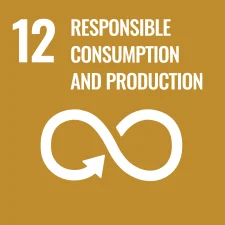
Goal 12
Ensure Sustainable Consumption and Production Patterns
We are always on the lookout for lower impact packaging alternatives and apply scientific rigor to ensure that alternatives don’t have any unintended consequences. Through our Packaging Sustainability Goals we are further trying to lower the overall impact of our packaging.
Our 2022 Stewardship Report has been prepared in accordance with the GRI Standards: Core option.
Commitments to stewardship
